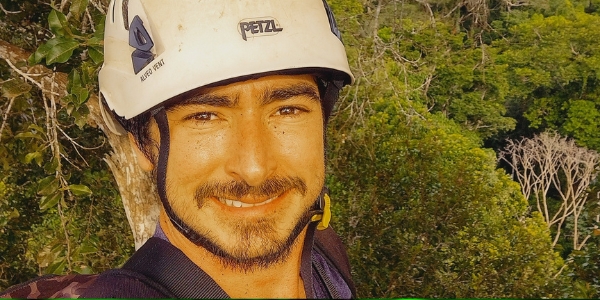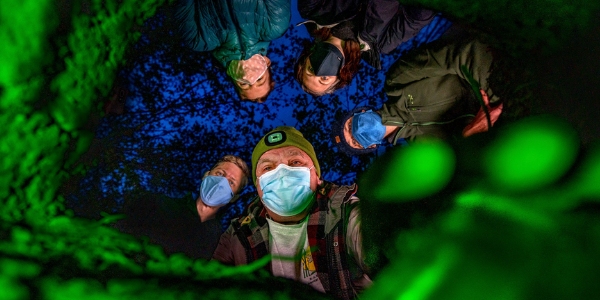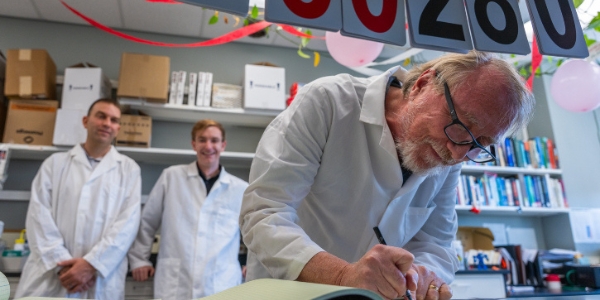Dispatches from the rainforest reveal how trees adapt as they climb
For someone afraid of heights, studying treetops might not seem like an obvious career choice.
Leo Ziccardi knows that better than most. The forestry PhD student grew up in São Paulo, the Brazilian city of 12 million people more than 1,500 miles from the country’s towering rainforests. The tallest thing he scaled most days as a kid was the top floor of his family’s apartment.
But when he got to MSU and started talking with his adviser Scott Stark about potential thesis questions — particularly related to how trees cope with heat and drought — he realized that the only way to address them was by climbing.

Undaunted, Ziccardi threw himself into figuring out what it takes to climb a tree, even signing up for a 40-day intensive course in northwestern Panama.
“I would fall asleep in my hammock with a carabiner every day, trying to learn how to open and close it as quickly as I could,” Ziccardi said. “The trick is to learn to use and trust your gear.”

Soon, he found himself in the heart of the Amazon rainforest in Tapajós National Forest. Over two years he spent hundreds of hours in the canopy, using ropes, harnesses, ascenders and his own leg power to climb trees stretching more than 120 feet into the sky.
The work wasn’t without mishaps. Pounding rains. Stinging bees. Swarming ants. “The tiny ones that bite you and it really hurts,” Ziccardi said.
He and his colleagues found that as trees continue their centuries-long climb, they are constantly changing how they do things like transport water and capture light as they grow taller.
“Their strength is their ability to change strategies through their lifetime,” Ziccardi said.
What did it feel like to find himself suspended in the treetops? “It's hard to put into words,” Ziccardi said. “I felt so privileged to be in places that no one had been before. Like I was taking the first steps on the moon.”
The team’s findings were published Nov. 8 in the journal Functional Ecology. Read the full story behind the research in Ziccardi’s own words on the journal’s blog.



